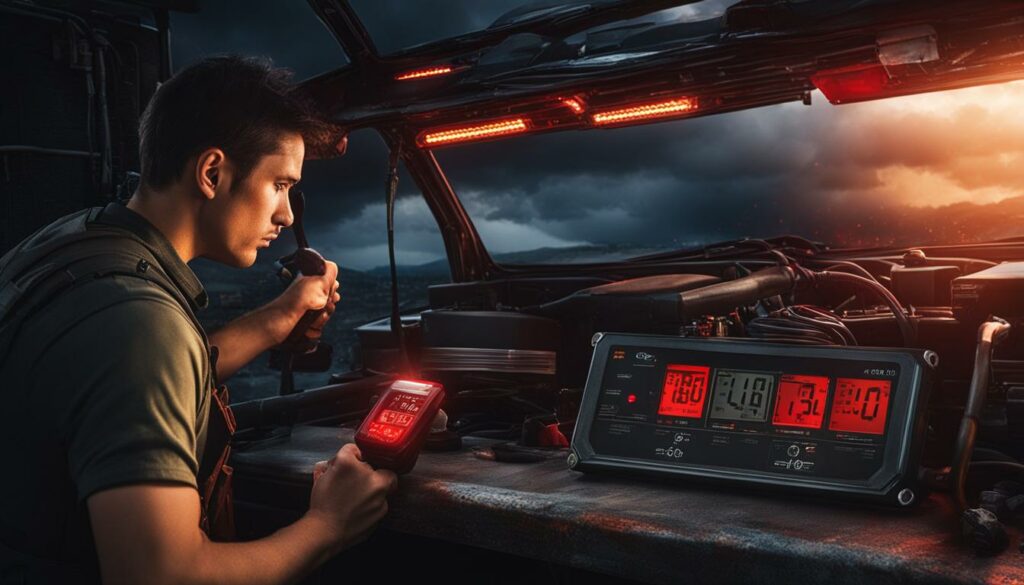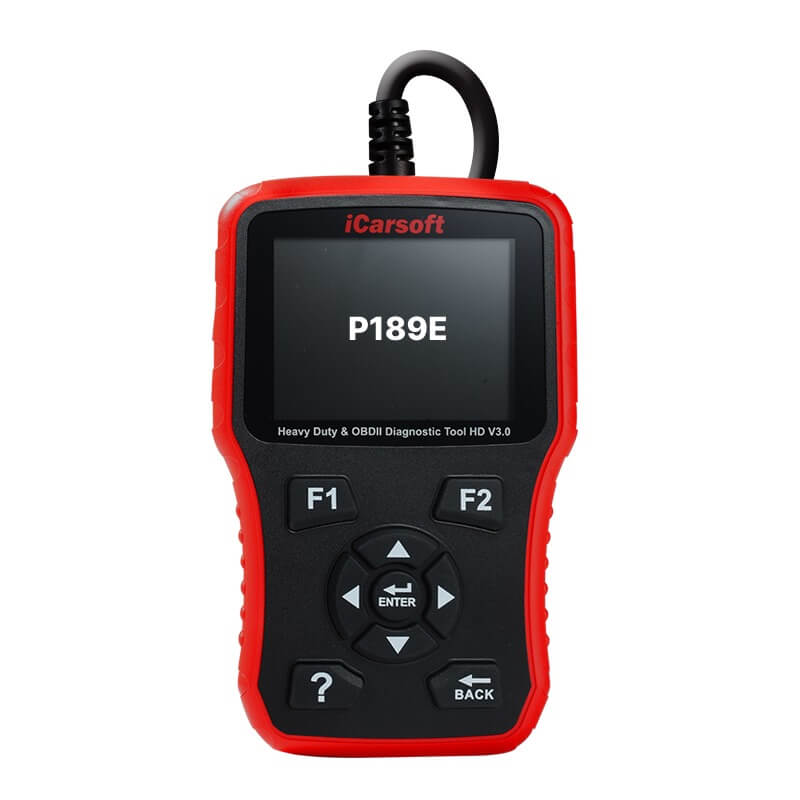P189E – Differential Pressure Sensor B Circuit Low
POSTED IN pcodes
In this article, we will discuss the P189E code, which refers to a low circuit B pressure sensor in the differential pressure sensor. This code indicates a fault in the circuit that measures the pressure difference between two points in the vehicle. Understanding and troubleshooting this issue is crucial for maintaining optimal vehicle performance.
Key Takeaways:
- The P189E code relates to a low circuit B pressure sensor in the differential pressure sensor.
- Common causes of this code include a faulty sensor, wiring issues, or a problem with the control module.
- Severity of the P189E code can vary, with symptoms ranging from a minor performance issue to drivability problems.
- Diagnosing the specific cause of the code is important for determining the appropriate repair solution.
- Troubleshooting steps for the P189E code involve inspecting the sensor, checking wiring, and ensuring proper fluid levels.
Severity and Symptoms of P189E Code
The severity of the P189E code can vary depending on the specific vehicle and the underlying issue. In some cases, the code may only result in a minor performance issue or a warning light on the dashboard. However, in other cases, it can lead to drivability issues or affect the overall functionality of the vehicle.
Some common symptoms of the P189E code include:
- Loss of power
- Decreased fuel efficiency
- Difficulty shifting gears
- Illuminated check engine light
These symptoms can be indicative of a problem with the differential pressure sensor in the circuit. It is important to address the P189E code promptly to prevent further damage and ensure the optimal performance of the vehicle.

Buy tested tuning file for Adblue / EGR / DPF / Adblue off now!
The severity and symptoms of the P189E code should not be overlooked, as they can be indicators of underlying issues that require attention. In the next section, we will explore the potential causes of the P189E code and discuss troubleshooting steps to diagnose and resolve this issue.
Causes of P189E Code
The P189E code can be triggered by various factors that affect the differential pressure sensor and its circuitry. It is crucial to identify the specific cause to determine the most suitable repair solution. The following are some common causes associated with the P189E code:
- Faulty Differential Pressure Sensor: A malfunctioning pressure sensor can generate inaccurate readings or fail to detect pressure changes, leading to the P189E code. Regular wear and tear, electrical problems, or internal component failures can contribute to sensor malfunction.
- Damage to Wiring or Connectors: The wiring harnesses and connectors connected to the differential pressure sensor can become damaged due to environmental factors, improper installation, or accidents. Issues such as frayed wires, loose connections, or corroded terminals can disrupt the sensor’s signal transmission, triggering the P189E code.
- Low Transmission Fluid Level: In some cases, a low level of transmission fluid can cause the P189E code to appear. Insufficient fluid can affect the sensor’s ability to measure pressure accurately, resulting in an error code.
- Malfunctioning Transmission Control Module (TCM): The TCM is responsible for controlling and coordinating the transmission’s functions. If the TCM malfunctions or experiences a software issue, it can send incorrect signals to the differential pressure sensor, leading to the P189E code.
- Other Related Issues: Additional factors that can contribute to the P189E code include faulty solenoids, damaged internal transmission components, or issues with the engine control module (ECM). A comprehensive diagnostic process is necessary to identify these less common causes.
By addressing these underlying causes, experienced technicians can effectively resolve the P189E code and restore the vehicle’s performance and reliability. Next, let’s explore the troubleshooting steps to isolate and rectify the issue.
Troubleshooting Steps for P189E Code
When encountering the P189E code, it is important to follow a systematic troubleshooting process to identify and resolve the issue. Here are the recommended steps:
- Use a professional scan tool: Begin by connecting a professional scan tool to retrieve the specific P189E code and any associated data. This will provide valuable insights into the potential cause of the issue.
- Inspect the differential pressure sensor: Carefully examine the differential pressure sensor for any signs of damage or malfunction. Look for loose connections, corroded pins, or physical defects. If the sensor is faulty, it may need to be replaced.
- Check the wiring and connectors: Inspect the wiring harness and connectors associated with the differential pressure sensor. Look for any signs of damage, frayed wires, or loose connections. Repair or replace any damaged components as necessary.
- Ensure proper transmission fluid levels: Verify that the transmission fluid levels are within the recommended range. Low fluid levels can impact the performance of the differential pressure sensor and trigger the P189E code. Top up the fluid if necessary.
- Perform necessary repairs or component replacements: Based on the findings from the previous steps, take appropriate action to address the underlying issue. This may involve repairing damaged wiring, replacing the differential pressure sensor, or reprogramming the transmission control module.
Remember, it is always recommended to consult a professional mechanic or technician for accurate diagnosis and repair of automotive issues. They have the expertise and specialized tools to troubleshoot complex codes like P189E.
By following these troubleshooting steps, you can effectively diagnose and resolve the P189E code, ensuring optimal performance of your vehicle.

Repair Solutions for P189E Code
If you’ve encountered the P189E code, rest assured that there are repair solutions available to address the issue. The specific solution will depend on the underlying cause of the problem. One potential solution is to replace a faulty differential pressure sensor. By installing a new sensor, you can restore proper functionality and ensure accurate measurement of the pressure difference.
In some cases, the problem may stem from damaged wiring or connectors. If this is the case, the repair solution involves identifying and repairing the damaged components. This will help establish a proper electrical connection and eliminate any interference that may be causing the P189E code.
Another possible repair solution is to top up the transmission fluid. Low transmission fluid levels can contribute to the P189E code. By ensuring the fluid is at the appropriate level, you can prevent further issues related to the low circuit B pressure sensor.
In more complex scenarios, reprogramming the transmission control module may be necessary. This can help recalibrate the system and address any software-related issues that are triggering the P189E code. It is important to note that in some cases, professional assistance may be required to perform these repairs. Automotive specialists have the expertise and equipment to ensure accurate diagnosis and effective repair solutions.
FAQ
What does the P189E code mean?
The P189E code refers to a low circuit B pressure sensor in the differential pressure sensor. It indicates a fault in the circuit that measures the pressure difference between two points.
How severe is the P189E code and what are the symptoms?
The severity of the P189E code can vary. Common symptoms include a loss of power, decreased fuel efficiency, difficulty shifting gears, and an illuminated check engine light.
What are the common causes of the P189E code?
Common causes of the P189E code include a faulty differential pressure sensor, damaged wiring or connectors, low transmission fluid level, a malfunctioning transmission control module, or other related issues.
What are the troubleshooting steps for the P189E code?
To troubleshoot the P189E code, it is recommended to use a professional scan tool to retrieve the specific code and data. The differential pressure sensor, wiring, connectors, and transmission fluid level should be inspected for any faults or issues.
What are the repair solutions for the P189E code?
The specific repair solution for the P189E code depends on the underlying cause. It may involve replacing the differential pressure sensor, repairing wiring or connectors, topping up transmission fluid, or reprogramming the transmission control module.


